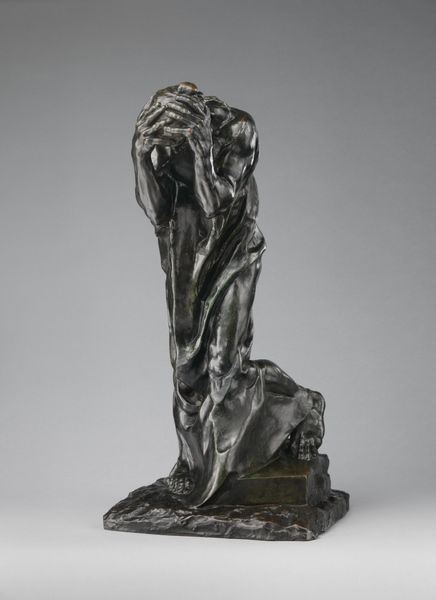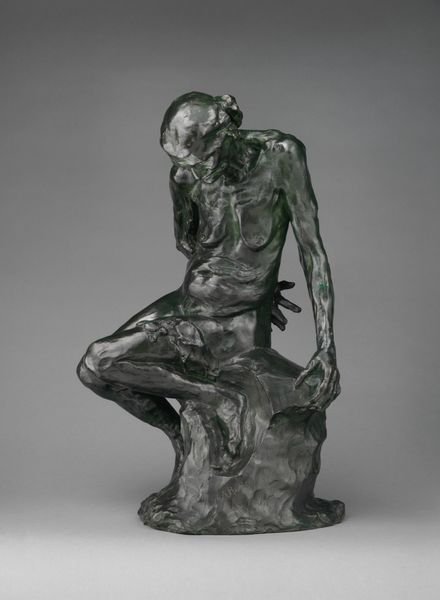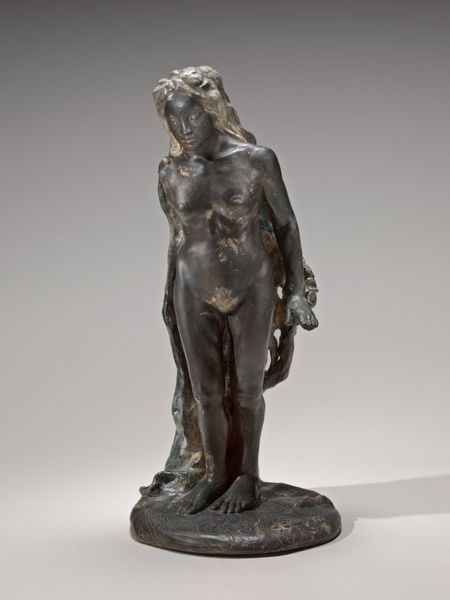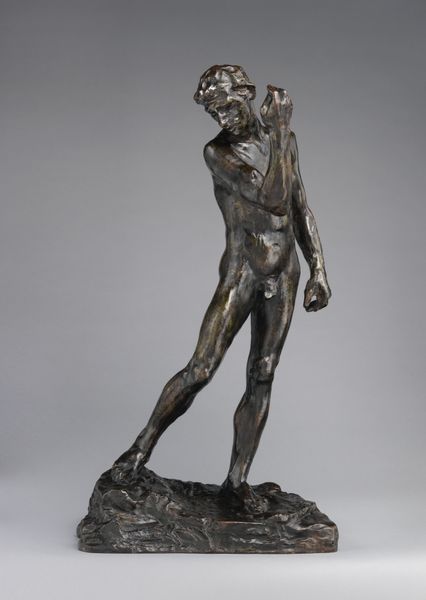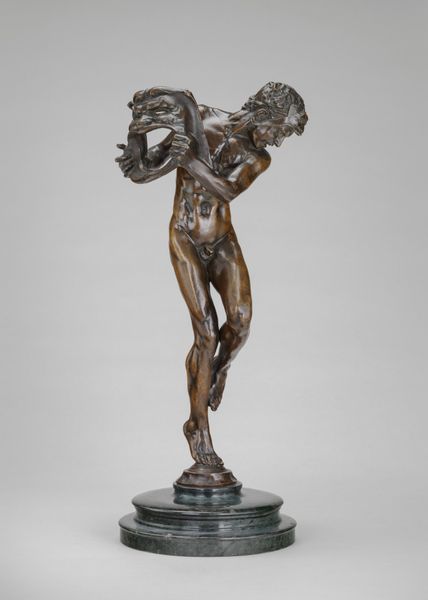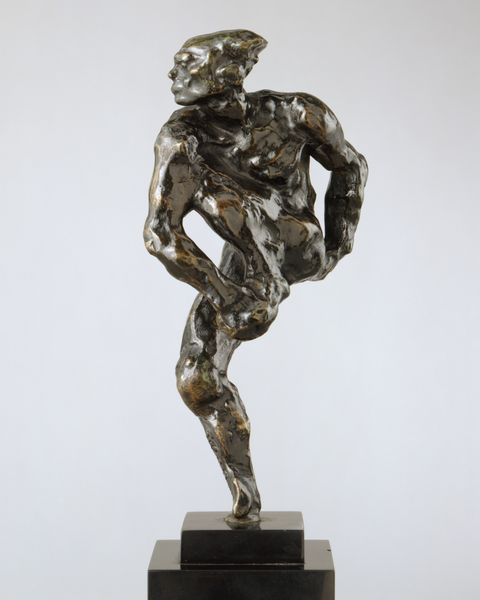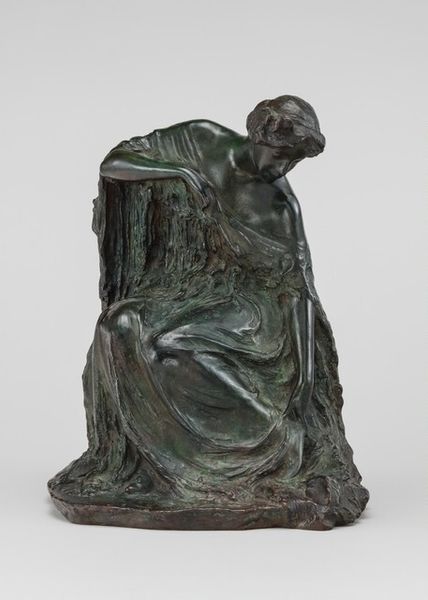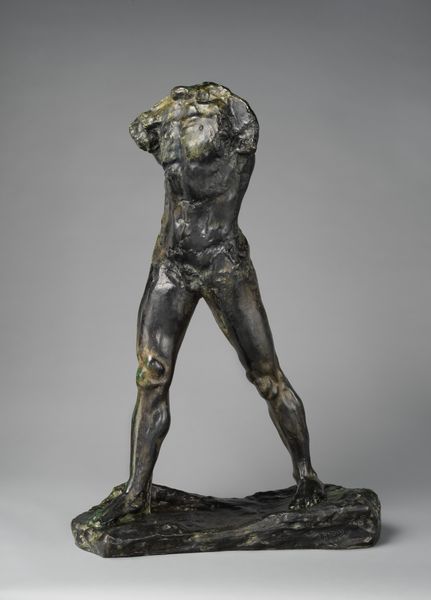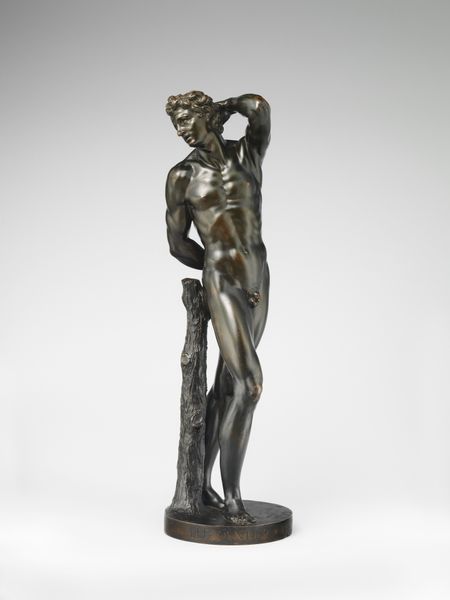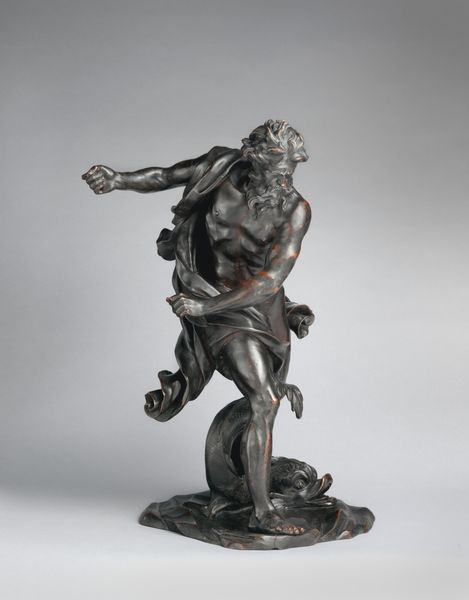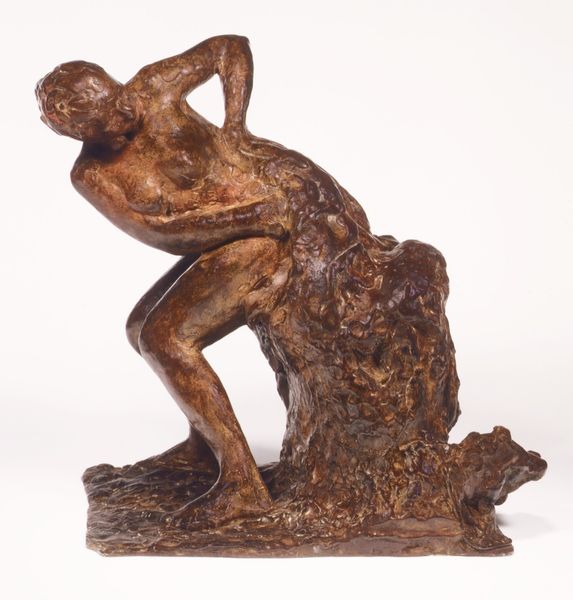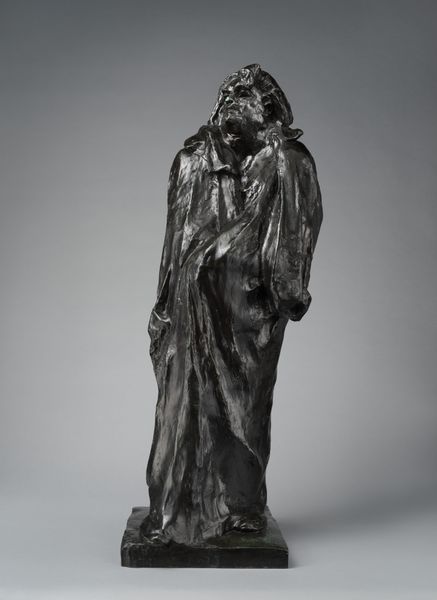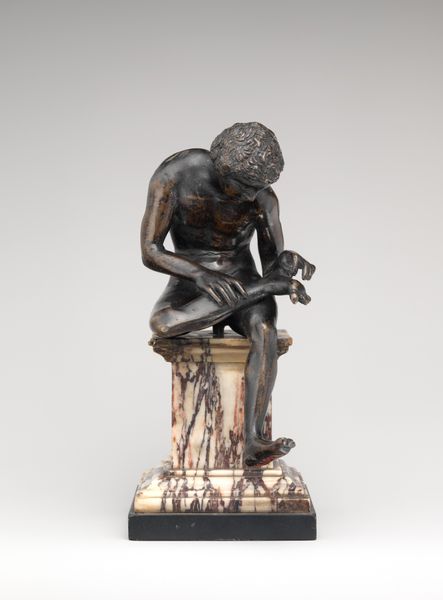
Dimensions: wt. confirmed: 17 3/4 × 8 7/8 × 8 1/2 in., 20.3 lb. (45.1 × 22.5 × 21.6 cm, 9.2 kg)
Copyright: Public Domain
Curator: This striking bronze sculpture is Auguste Rodin's "Pierre de Wiessant," created between 1880 and 1912. It is currently located here at the Metropolitan Museum of Art. Editor: My first impression is one of immense vulnerability. The way the figure is positioned, almost collapsing, speaks of defeat. Curator: Indeed. "Pierre de Wiessant" is one of the Burghers of Calais, a group of six men who offered themselves as hostages to King Edward III during the Hundred Years' War to save their city from siege. The sculpture encapsulates themes of sacrifice, citizenship, and collective trauma. We might explore it through the lens of intersectionality – considering how gender, class, and power dynamics intersect within this historical event. Editor: And materially speaking, observe the rough texture, almost raw. Rodin’s hand is evident in the final form, making the bronze itself a kind of record of labor and artistic struggle. He challenged conventional artistic processes through an expressive use of wax and plaster and later with the bronze casting method. Curator: Rodin often broke with traditional heroic depictions. The men are not glorified; rather they are imbued with a sense of complex humanity. Each figure, in its individual stance and gesture, presents a meditation on despair. We can contextualize this work by thinking about contemporary notions of masculinity and self-sacrifice, unpacking how it either subverts or reinforces gendered power structures. Editor: Absolutely. Moreover, it would be good to acknowledge how bronze as a material carries its own history. Sourced, cast, and shaped – its production ties it to economic and political systems beyond just the artistic sphere. Consider how different foundries interpreted Rodin’s vision through varying technical capabilities and how their involvement also impacted the work. Curator: When we look at art, especially historical works like these, it’s crucial that we acknowledge that artistic process, materials, and reception, and interpret meaning through contemporary perspectives. Understanding its cultural significance is key. Editor: Yes, thinking through process helps us re-evaluate the value we assign to art, broadening our engagement with art’s production, history, and material conditions.
Comments
No comments
Be the first to comment and join the conversation on the ultimate creative platform.

